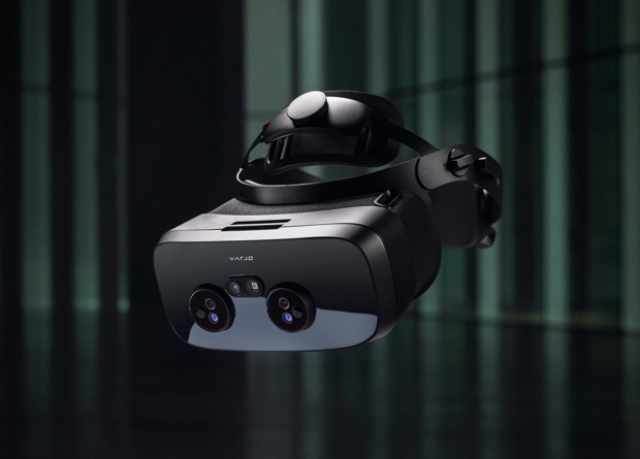Varjo introduced the xr-3 mixed reality helmet with an unusual optical system with two displays for each eye: one displays the image in a large field of view, and the second only in the Central part, but with a much higher pixel density. In addition, the device has cameras and lidar, so it can work as an augmented reality helmet, displaying images from cameras with superimposed virtual objects.
Today, there are two classic types of devices for displaying virtual objects right in front of your eyes: virtual reality helmets that show only the virtual world, and augmented reality helmets or glasses that overlay virtual objects with real ones. But with the development of technology, a third type of device appeared-VR helmets that can "pass" the real world through the body. They capture an image of the real world in front of the user using cameras and immediately display it on displays. This allows a person to see the environment around them and, for example, not to crash into objects in the room when walking with a helmet on.
Current-generation helmets blend virtual objects with the real world, building a map of the room based on video from multiple cameras on the case. Varjo introduced a helmet that uses lidar and cameras to create accurate maps. The helmet combines data from them in real time and creates a depth map for the surrounding space, allowing you to accurately link virtual objects to real ones without shifting them over time.
The main feature of the helmet is an unusual display system, which was previously used in the previous version, but was modified in the new one. In its work, it resembles the work of human foveal vision: we have a wide field of vision, but we see clearly only in a small Central area. To do this, there are two images from two separate displays in front of each eye. The large display right in front of your eyes has a resolution of 2880 × 2720 pixels and covers an area of view that is 115 degrees wide. In the center of their field of view, a person sees both an image from a large matrix and an image superimposed on it with a width of 27 degrees and a resolution of 1920 × 1920 pixels. The display frequency is 90 Hertz.
Since the user's view in the helmet constantly changes direction, the area of view of a dense image from a small display must be constantly changed. In the new device, this is done due to the fact that the display itself is located at the bottom perpendicular to the direction of view, and above it there is a movable translucent plate that controls where the image is reflected from the display. The helmet receives information about the view from the itrackers inside the case, which operate at a frequency of 200 Hertz.

Principle of operation of a two-display design with separate displays for the peripheral and Central areas of vision
Image source: Varjo
The helmet also has a built-in optical system for tracking the position of hands from Leap Motion. It allows you to interact with virtual items without controllers. Due to the many sensors and components, the helmet has a fairly large weight: 594 grams without the strap and almost a kilogram with it. The cost of the helmet is 5495 dollars. Some of the features are also available for a subscription price of $ 1,495 per year. Sales of the helmet will begin in early 2021.
The dual image output system is also used in the NVIDIA prototype introduced in 2019, but it is an AR helmet, so the developers had to make both optical systems semi-transparent.
Gregory Copies

